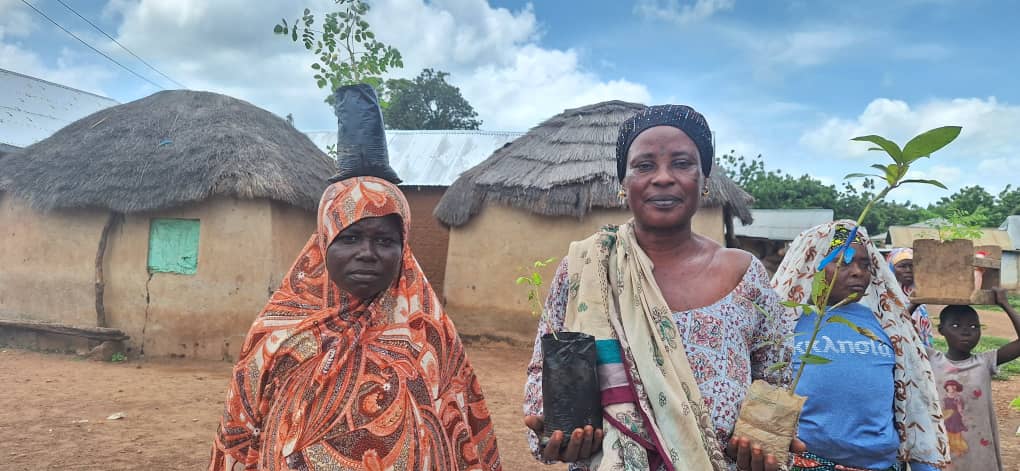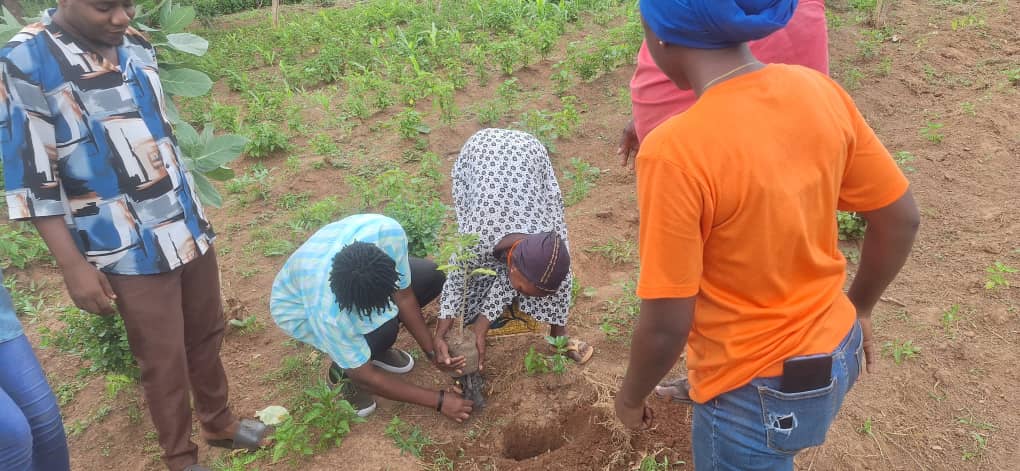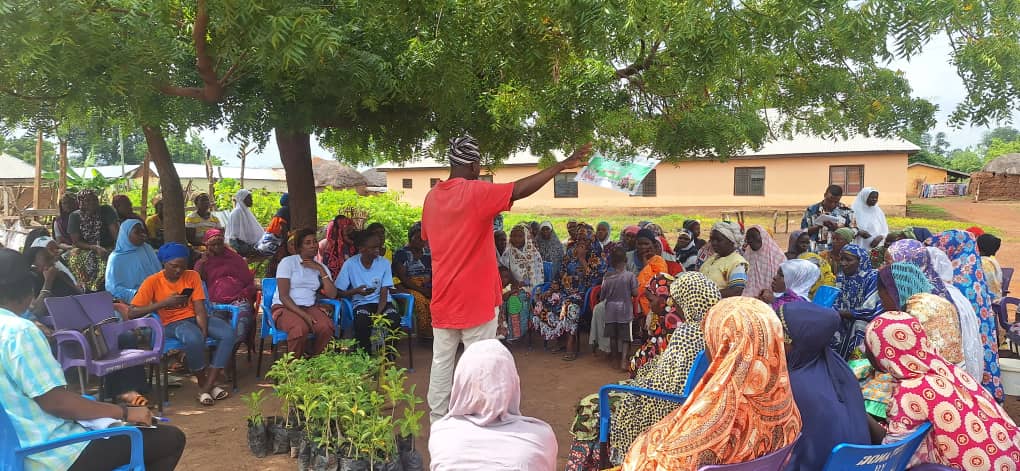Across Africa, women remain at the centre of agriculture. They till the land, preserve seed systems, and safeguard food security, yet their voices are often marginalised in decision-making. The Intergovernmental Panel on Climate Change (IPCC, 2022) emphasises that sustainable food systems in climate-vulnerable regions depend on inclusive approaches that recognise women’s agency as custodians of ecological knowledge.
In the Central Gonja District in Ghana, the CIRAWA Project has begun to shift this imbalance. On 22 July 2025, women farmers in Kusawgu gathered for a participatory forum that placed their leadership at the centre of the transition toward agroecology.
Women Shaping Agroecology
The forum was not just about sharing ideas; it was about co-creation. Through open dialogue, peer learning, and intergenerational exchange, women articulated both their lived experiences and their aspirations for the future of farming. Discussions ranged from soil fertility and composting to tree planting and livestock integration, reflecting the multidimensional nature of agroecology. What made the engagement particularly striking was the urgency expressed by participants. Women spoke of declining rainfall, vanishing wild fruits, soil degradation, and biodiversity loss—changes they have witnessed first-hand.
As part of the engagement, tree seedlings of baobab, mango, and moringa were distributed to the participants. We noticed that the seedlings supply became an entry point into broader discussions on women’s leadership in climate adaptation, resource governance, and food sovereignty. Over 120 women participated in this engagement, which was far beyond the number of participants that were expected. Therefore, the demand for seedlings quickly outstripped what was available.
This was a vivid reminder of the hunger for practical solutions. Participants rushed to receive these seedlings, a moment that clearly demonstrated both the urgency of ecological restoration and the energy women are ready to invest. The symbolic act of rushing to claim seedlings illustrates not just scarcity but aspiration—a readiness to invest in long-term ecological health for households and future generations.

The choice of baobab, mango, and moringa seedlings carried significance far beyond their immediate use as planting material. Each of these species contributes uniquely to ecological restoration, food security, and income diversification.
Baobab, often referred to as the “tree of life,” is drought-resistant and provides nutrient-rich fruits and leaves, while also enhancing soil fertility and offering shade in increasingly harsh climates.
Mango trees not only provide economic value through fruit sales but also support agroforestry systems that stabilise soils and reduce erosion.
Moringa, sometimes called the “miracle tree,” is prized for its fast growth, capacity to thrive in poor soils, and leaves packed with vitamins and minerals critical for addressing malnutrition. Together, these seedlings embody a low-cost, high-impact intervention capable of restoring degraded ecosystems while directly meeting nutritional and livelihood needs.
Beyond their biological and nutritional benefits, these seedlings represent a pathway for women to link indigenous ecological knowledge with climate-smart practices. As women take the lead in planting and managing these trees, they strengthen communal resilience against declining rainfall and biodiversity loss. When nurtured properly, these species can transform local landscapes into multifunctional agroecological systems.

Insights from the Ground
The conversations revealed more than environmental awareness—they reflected a determination to reimagine solutions. Women demonstrated familiarity with pruning and basic nursery practices but pointed out their limited exposure to grafting and systematic seedling management. This gap represents an opportunity: targeted training and resourcing could turn this determination into large-scale transformation.
Another insight emerged around indigenous trees. Many women assumed species like shea, dawadawa, and baobab would naturally regenerate. Yet unsustainable logging, charcoal production, and climate stress are eroding these ecological safety nets. Once presented with this evidence, participants quickly recognised the need for deliberate conservation and replanting. This shift in perception highlights the power of participatory education in reshaping community priorities.
This engagement demonstrates that workshops alone are not enough. To make women’s agroecological leadership sustainable, structural reforms are required. Agricultural extension services must integrate women’s forums into their planning. Land access and financial resources must be guaranteed. Ministries of Agriculture, Gender, and Environment need to collaborate so that women’s agroecological priorities are reflected in district budgets and national adaptation strategies.
At the global level, donors and development institutions must recognise that women’s leadership in agroecology is a multiplier. It delivers climate adaptation, biodiversity restoration, and improved nutrition simultaneously.
Pathways Forward
The Central Gonja experience raises urgent policy questions:
- How can national and regional policies incentivise women’s indigenous knowledge systems while linking them to formal research and extension structures?
- What mechanisms can ensure climate and biodiversity financing flows directly to women’s groups, rather than trickling down through male-dominated systems?
The way forward requires action on three timelines. In the short term, scaling composting, grafting, and indigenous seed preservation must be prioritised, alongside improving access to seedlings. In the medium term, women’s forums should be institutionalised within district agricultural planning and resourcing. Looking to the long term, Ghana must embed women’s agroecological leadership into its climate adaptation strategies and position this model as a regional innovation through ECOWAS platforms.
The Kusawgu engagement is more than an isolated activity; it is a glimpse of what is possible when women’s voices move from the margins to the centre of agroecological governance. The passion, urgency, and creativity displayed by women farmers illustrate that they are not passive beneficiaries but active architects of resilience. Agroecology without women risks perpetuating inequality. Agroecology with women at its heart promises resilience, sovereignty, and justice for generations to come.
